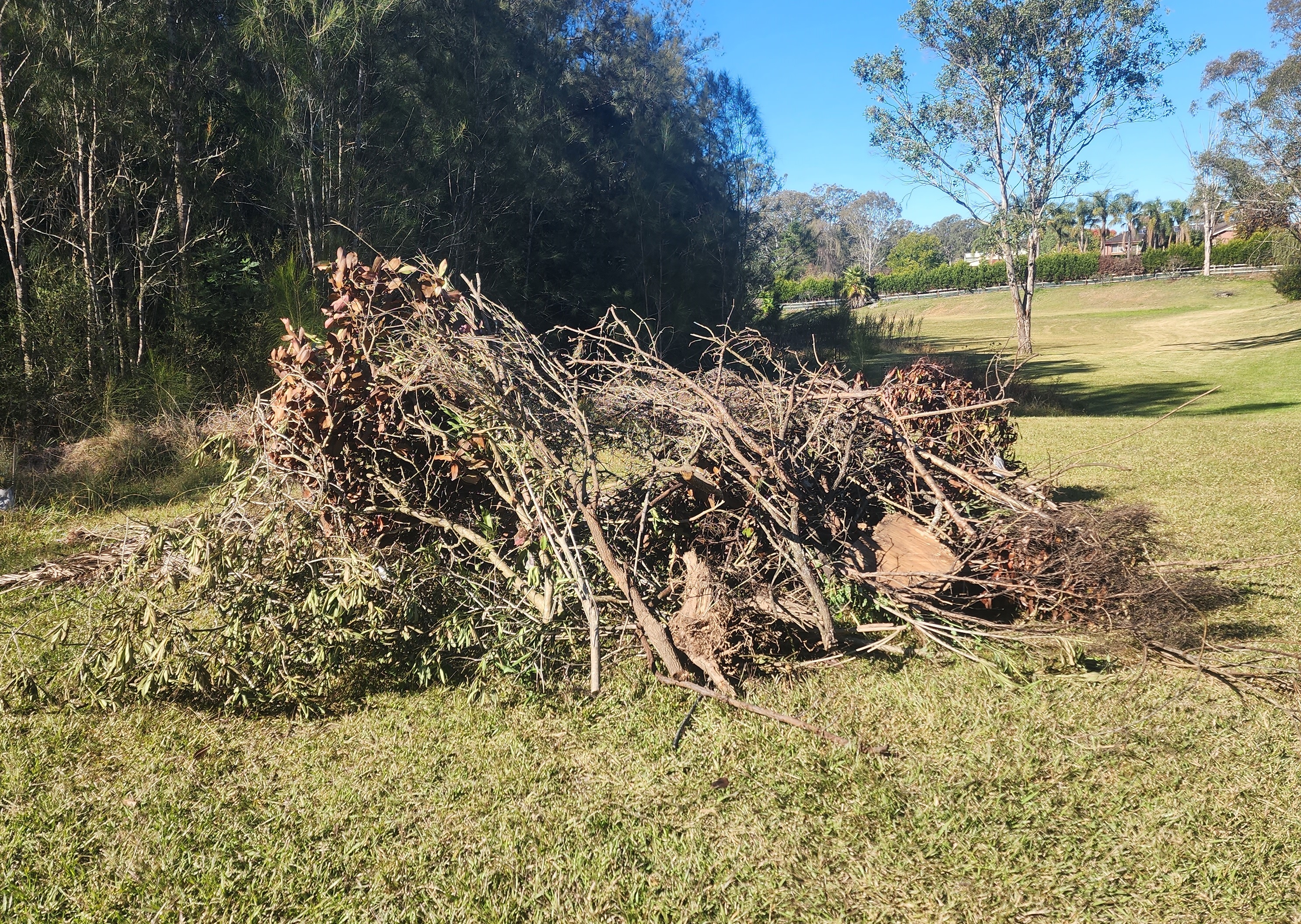Why are there woody weed piles in bushland?
- Details
- Written by: Teela Griffin Penrith City Council (02) 4732 7777 (02) 4732 7958 council@penrithcity.nsw.gov.au https://www.penrithcity.nsw.gov.au 601 High St Penrith NSW 2750 Australia

This is a commonly used technique in Bush Regeneration, with benefits including creating wildlife habitat, delineating and bordering tracks, improving the soil by keeping organic matter onsite, and creating micro-climates. As it breaks down, it’s a cost saving as having to dispose of this offsite would be time consuming and costly to the community.
Piles break down over time and are monitored by Council staff. Piles are also constructed to a small size which is recommended by NSW RFS to not create excess fuel load in case of bushfire risk. Council staff liaise with NSW RFS on a regular basis on these topical situations.
A woody weed pile is different to dumped greenwaste though! Below is a large amount of dumped greenwaste in a usually mown area in a Penrith bushland reserve.

Illegal dumping has the potential to introduce non-desirable species to a reserve and has a financial impact on the local community. While Council bears the initial cost of removal, transportation and correct disposal of the illegal dumped waste, and the associated costs with surveillance, investigation, enforcement and management of the illegally dumped sites, these costs are passed onto the residents, ratepayers and community as a whole.
Where can I learn more?
- Coarse woody debris in Australian forest ecosystems: A review. Austral Ecology.
- Fauna refuge log piles. AABR
- The use of piles was referenced in The regeneration of Wingham Bush, NSW. AABR
- The use of piles logs as habitat is referenced in Animal survival in urban bushland areas. AABR

